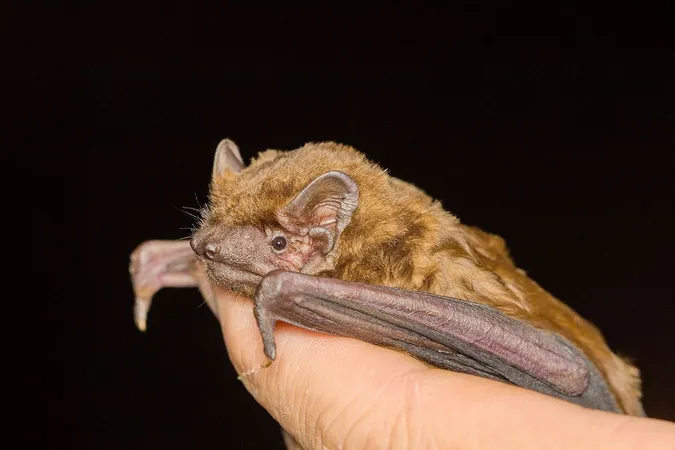
Bats Ride the Winds: How Common Noctules Navigate Storms During Migration
2025-01-02
Author: Jia
Introduction
The common noctule bat (Nyctalus noctula), a small yet remarkable creature with wingspans ranging from 12 to 18 inches (320 to 450 mm), has captured the attention of scientists and nature enthusiasts alike. Found across North America, Europe, and Asia, these golden-brown bats are not just aerial acrobats; they are adept at long-distance migration, a behavior that raises fascinating questions about their survival strategies amidst threats from predators, climate change, and energy demands.
Groundbreaking Study
A groundbreaking study published in the prestigious journal Science has unveiled the astonishing tactic these bats employ to make their seasonal migrations: they literally surf on the winds generated by approaching storms. Researchers utilized GPS technology and an innovative "internet of things" tracking network to monitor the flight paths of 71 female common noctule bats.
Migration Patterns
The findings revealed that these bats prefer to migrate during warm nights that offer low crosswind speeds and favorable tailwinds. This allows them to conserve energy as they travel, effectively reducing their exertion during long flights. Interestingly, the study highlighted that early in the spring migration season (from mid-April to early May), the bats were more likely to take advantage of these ideal wind conditions. However, as the season progressed into late May and early June, particularly pregnant females displayed a cautious approach, preferring to avoid the less favorable weather patterns that could inhibit their journey.
Threats to Survival
While mastering the art of storm navigation is impressive, the study underscores that common noctules face more significant threats beyond the elements. Human activities have severely impacted these bats, with climate change being a major concern driven by anthropogenic influences. Furthermore, they are susceptible to other non-human-induced dangers, such as the devastating disease known as white-nose syndrome, which has led to a worrying decline in bat populations.
Conclusion
The revelations from this research not only illustrate the resilience of these remarkable creatures but also serve as a reminder of the impact that human behavior can have on wildlife. Protecting migratory paths and addressing climate change are crucial steps we must take to ensure the survival of species like the common noctule bat. As we continue to explore the intricate relationships between animals and their environments, studies like this shine a light on the wonders of the natural world and the urgent need for conservation efforts.




 Brasil (PT)
Brasil (PT)
 Canada (EN)
Canada (EN)
 Chile (ES)
Chile (ES)
 Česko (CS)
Česko (CS)
 대한민국 (KO)
대한민국 (KO)
 España (ES)
España (ES)
 France (FR)
France (FR)
 Hong Kong (EN)
Hong Kong (EN)
 Italia (IT)
Italia (IT)
 日本 (JA)
日本 (JA)
 Magyarország (HU)
Magyarország (HU)
 Norge (NO)
Norge (NO)
 Polska (PL)
Polska (PL)
 Schweiz (DE)
Schweiz (DE)
 Singapore (EN)
Singapore (EN)
 Sverige (SV)
Sverige (SV)
 Suomi (FI)
Suomi (FI)
 Türkiye (TR)
Türkiye (TR)
 الإمارات العربية المتحدة (AR)
الإمارات العربية المتحدة (AR)